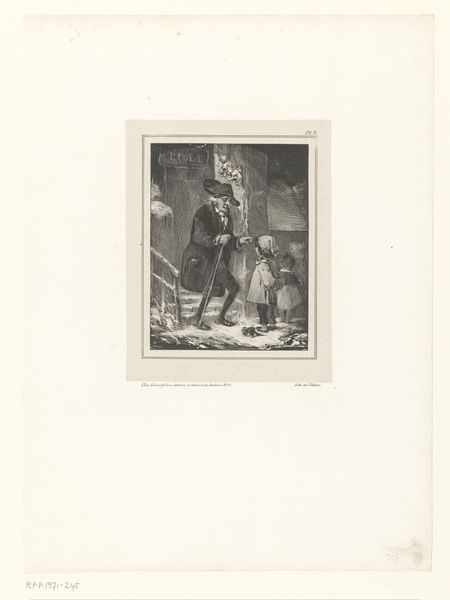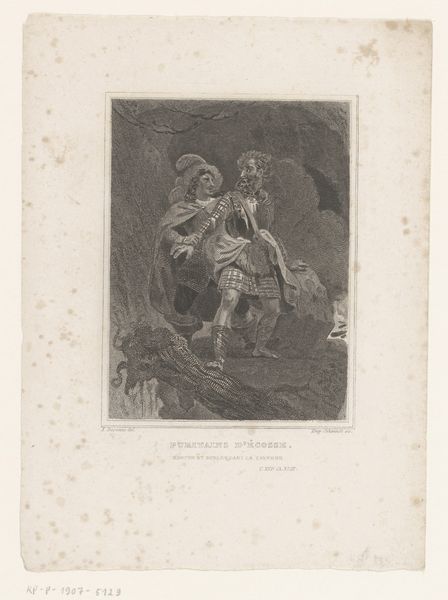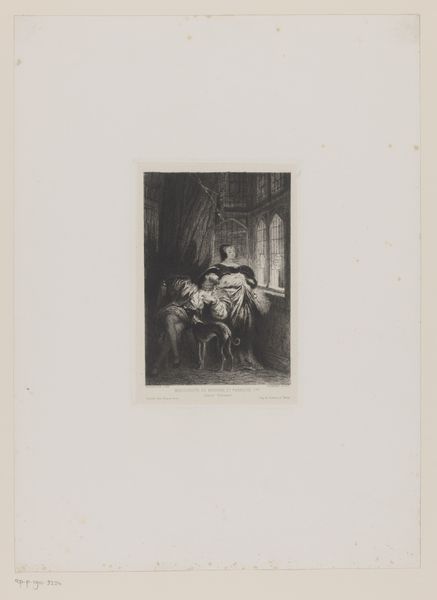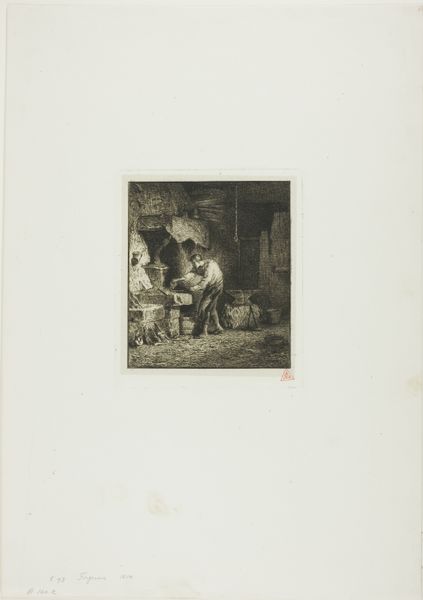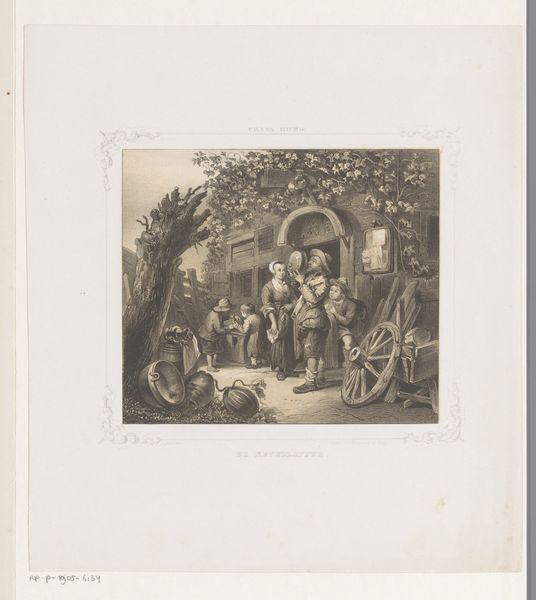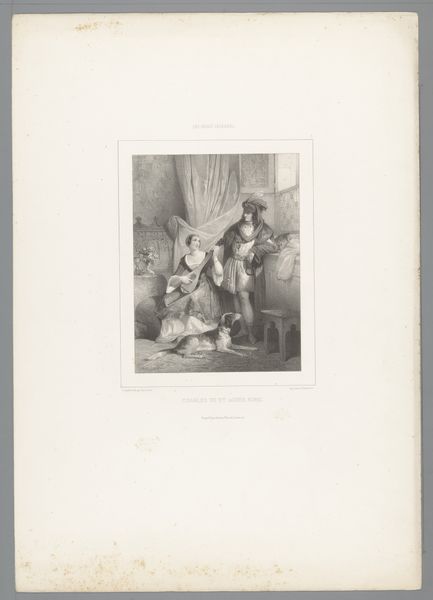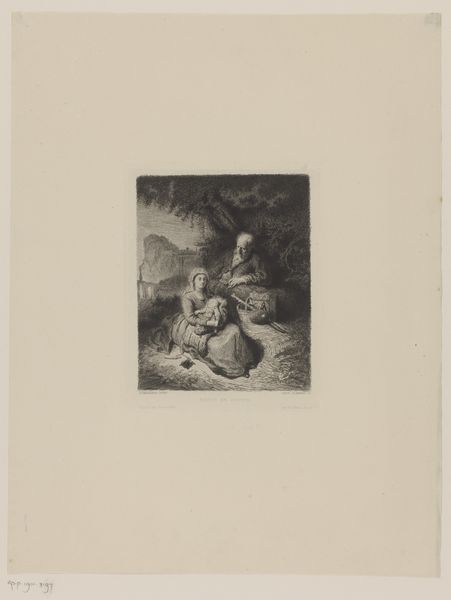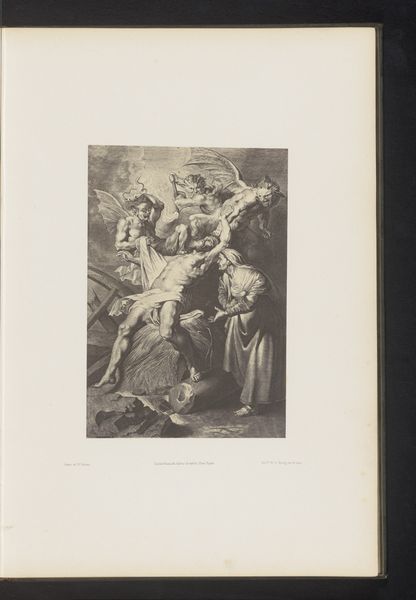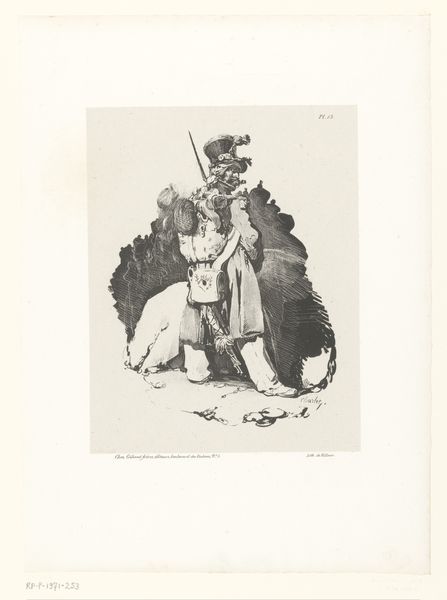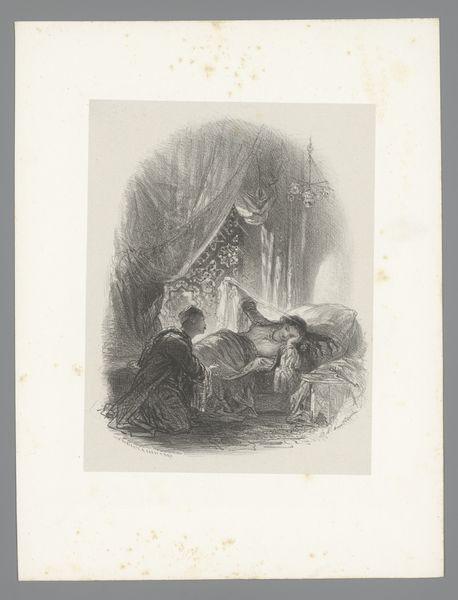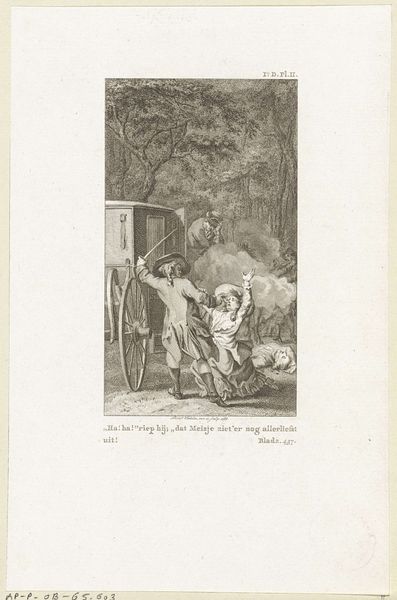
drawing, print, etching, paper, pen
#
portrait
#
drawing
#
narrative-art
# print
#
etching
#
figuration
#
paper
#
romanticism
#
line
#
pen
#
genre-painting
#
history-painting
#
academic-art
#
realism
Dimensions: height 355 mm, width 267 mm
Copyright: Rijks Museum: Open Domain
Curator: Editor: We’re looking at Nicolas Toussaint Charlet's "Bedelaar krijgt aalmoes van een jonge vrouw", created in 1828. It’s an etching on paper and a rather striking depiction of charity. What are your first thoughts? Editor: It’s very detailed, especially considering it's an etching. The contrast between the ragged beggar and the finely dressed woman and child is really apparent. I’m curious about the choice of using etching – what impact does the process have on how we perceive the message? Curator: Excellent question. The use of etching, particularly in the 19th century, allowed for relatively mass production of images. This print, like many others at the time, could circulate widely, reaching diverse audiences. How does knowing it’s a print affect your perception, versus thinking of it as, say, a unique painting? Does that mass-production element change your thinking about the subject matter—a scene of wealth encountering poverty? Editor: It makes me think about accessibility. Because it's a print, more people would have had the opportunity to see this depiction of poverty and charity. Would you say this increased visibility might have been a commentary on social issues or maybe promoted a certain worldview among the middle class? Curator: Precisely. Consider the materials too – paper, ink, the very act of reproduction speaks to broader systems of distribution and consumption in 19th-century society. Etchings were commercial products; did Charlet create this image solely for artistic expression, or to tap into a market interested in sentimental narratives and scenes of everyday life? What do you think about labor when viewing it this way? Editor: It does shift the focus. The act of creating something reproducible makes me think more about the economic realities surrounding art. Seeing art objects as mass produced throws an unexpected wrench in how we perceive charity here; makes you wonder what the viewers saw in that relationship at the time, if the purpose was moral or economic... Curator: Exactly. Seeing how the sausage is made shifts the dynamic, doesn't it? Editor: Definitely gives me a lot to reflect on.
Comments
No comments
Be the first to comment and join the conversation on the ultimate creative platform.
